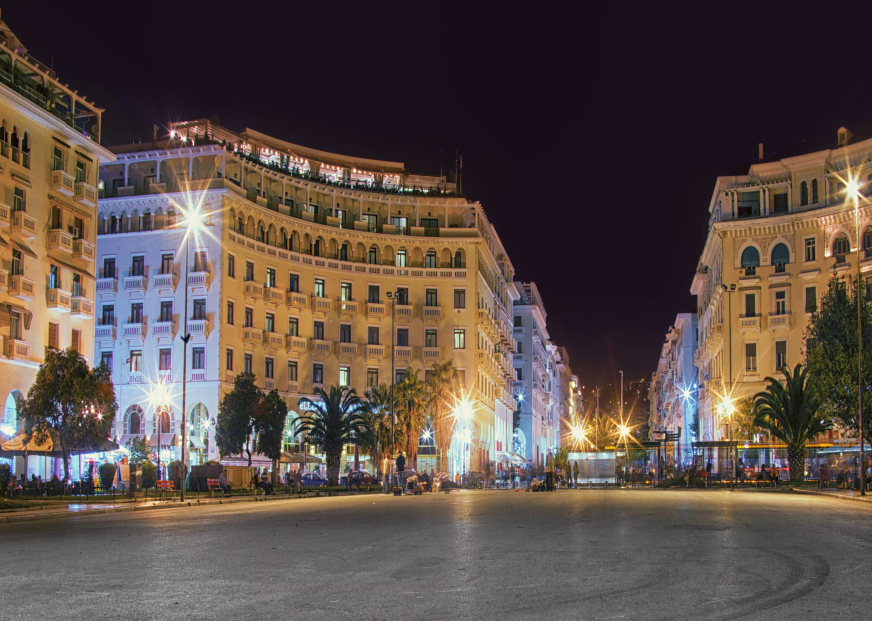TRAVEL TIPS
Thessaloniki: A Guide to the Key Sights and Landmarks
Start exploring
Thessaloniki's incredibly rich and cosmopolitan history with this guide to the city's must-see sights.
1.THE ROTUNDA (4TH CENTURY)
Long considered an original feature of the palace of the 4th-century Roman Emperor Galerius, perhaps a temple, the Rotunda appears instead to have been initially built by Constantine the Great in AD 322-323, according to recent studies by Greek archaeologists and art historians.
This new interpretation suggests the Rotunda was designed as Constantine’s third mausoleum; its mosaics – today considered equal in splendor to those of Ravenna – depicted not saints and martyrs, but the emperor himself and his courtiers, juxtaposed with Christian motifs to symbolize the Roman imperial and Early Christian worlds coming together. Later, the Rotunda became Thessaloniki’s first Christian church (late 4th c. AD) and, eventually, an Ottoman mosque (1591).
2. THE ARCH OF GALERIUS (4TH CENTURY)
Now standing alone, a solitary monument of Thessaloniki’s Roman past, the Arch of Galerius (“Kamara”) once formed an integral part of the elaborate palace of the emperor Galerius (who ruled AD 297-311), erected in the late 3rd and early 4th c. AD.
This relief-sculpted triumphal arch, originally consisting of a main span and two smaller flanking arches, marked the point where the Romans’ east-west highway across northern Greece, the Via Egnatia, passed directly through the emperor’s residence. Decorating the arch’s main piers are intricately carved panels with propagandistic scenes confirming Galerius’ authority, as he battles Persians, offers sacrifices and stands beside his fellow imperial tetrarchs.
3. THE CHURCH OF THE ACHEIROPOIETOS (5TH CENTURY)
Dedicated to the Virgin Mary, the Church of the Acheiropoietos was built ca. AD 450, on the site of a Roman bath. Traces of its original 5th-century mosaic decoration and of a 13th century fresco are still visible. The church was constructed with “Theodosian” capitals and other architectural elements crafted in a Constantinople workshop, features which indicate the close ties between Thessaloniki and the Byzantine capital.
The material used is white Proconnesian marble from the Sea of Marmara. With the Ottomans’ takeover of Thessaloniki (1430), the Church of the Acheiropoietos was the first of the city’s Christian churches to be converted into a mosque. In 1922-1923, the building was used to shelter Greek refugees from Asia Minor.
4. THE CHURCH OF AGHIOS DIMITRIOS
The present 20th-century Church of Aghios Dimitrios (Demetrius), patron saint of Thessaloniki, hides its earliest historical secrets deep within its crypt. Built over a Roman-era bath complex, the first church here was a small chapel (mid-320s AD) dedicated to the memory of the recently martyred Dimitrios, an early follower of Christianity, persecuted by Emperor Galerius.
His body was reportedly dropped down a well in the baths, where he had clandestinely met other fellow Christians. As his fame spread, and ever more pilgrims arrived to pay their respects, the chapel was replaced by a larger church (7th c.) that survived until the city’s devastating 1917 fire.
for full article see
here
